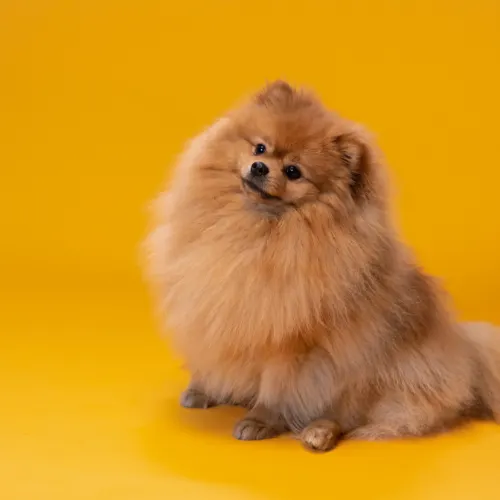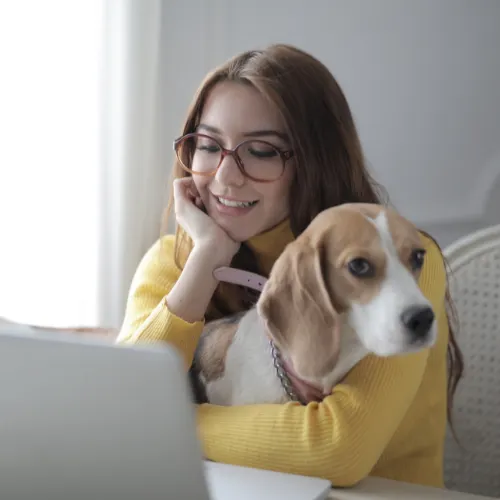Caring for your pet
All about your Dogs
How to deal with dog fleas?

Flea Medication
There are many types of flea medication available, including topical treatments, oral medications, and collars. These products kill fleas and prevent them from coming back.
Flea baths
Flea shampoos and dips can help kill fleas on your dog. However, they are not a long-term solution and should be used in conjunction with other flea prevention methods.
Flea combing
Regularly combing your dog with a flea comb can help remove fleas and their eggs from your dog's fur.
Vacuuming
Vacuuming your home regularly can help remove fleas and their eggs from your carpets and furniture
Dog breeds generally considered good for children

1. Labrador Retriever: They are friendly, loyal, and great with kids.
2. Golden Retriever: They are gentle, patient, and affectionate.
3. Beagle: They are playful and energetic, making them great playmates for children.
4. Bulldog: They are calm and patient, making them great companions for children.
5. Boxer: They are energetic and playful, making them great playmates for children.
6. Poodle: They are intelligent and easy to train, making them great for families with children.
7. Collie: They are gentle and protective, making them great family dogs.
8. Cavalier King Charles Spaniel: They are affectionate and gentle, making them great for families with children.
9. Bernese Mountain Dog: They are gentle giants and great with children.
10. Vizsla: They are energetic and playful, making them great for active families with children
Dog breeds that are suitable for small units

Chihuahua: These tiny dogs are perfect for small apartments and don't require a lot of exercise.
French Bulldog: Frenchies are small, affectionate, and adaptable to small living spaces.
Pug: Pugs are known for their friendly and playful nature, making them great companions for small apartments.
Shih Tzu: These small dogs are low-energy and don't require a lot of exercise, making them ideal for small living spaces.
Cavalier King Charles Spaniel: These dogs are gentle, friendly, and adaptable to small living spaces.
Remember, regardless of the breed, all dogs require proper care, attention, and exercise. It's important to research and choose a breed that fits your lifestyle and living situation.
Looking after a Puppy

Provide a safe and comfortable space for your puppy to sleep and play. This can be a crate, a bed, or a designated area in your home.2. Feed your puppy a balanced and nutritious diet. Consult with your veterinarian to determine the best food for your puppy's age, breed, and health needs.3. Establish a routine for potty breaks and training. Puppies need to go outside frequently, especially after eating, drinking, and playing. Use positive reinforcement techniques to teach your puppy basic commands and behaviors.4. Socialize your puppy with people and other animals. This will help your puppy develop good manners and prevent behavioral problems later on.5. Provide plenty of toys and activities to keep your puppy mentally and physically stimulated. This can include chew toys, puzzle toys, and interactive games.6. Take your puppy to the veterinarian for regular check-ups and vaccinations. This will help ensure your puppy stays healthy and happy.
The best dog breeds to go jogging

those that have high energy levels and are physically fit. Some of the best breeds for jogging include:
1. Labrador Retriever
2. German Shepherd
3. Siberian Husky
4. Australian Shepherd
5. Border Collie
6. Vizsla
7. Weimaraner
8. Dalmatian
9. Rhodesian Ridgeback
10. Boxer
It is important to note that not all dogs are suited for jogging, and it is important to consult with a veterinarian before starting a jogging routine with your dog. Additionally, it is important to start slow and gradually increase the distance and intensity of the exercise to avoid injury.
Helping your dog grow in a healthy way

1. Provide a balanced diet: Feeding your dog a balanced diet that is appropriate for their age, breed, and activity level is essential for their growth and development. Consult with your veterinarian to determine the best diet for your dog.2. Exercise: Regular exercise is important for your dog's overall health and growth. Make sure to provide plenty of opportunities for your dog to play and exercise.3. Regular check-ups: Regular veterinary check-ups can help ensure that your dog is growing and developing properly. Your veterinarian can also provide advice on how to promote healthy growth.4. Plenty of rest: Just like humans, dogs need plenty of rest to grow and develop properly. Make sure your dog has a comfortable and safe place to sleep and rest.5. Socialization: Socialization is important for your dog's mental and emotional growth. Make sure to provide plenty of opportunities for your dog to interact with other dogs and people in a safe and controlled environment.
Grooming dogs

1. Brush your dog's fur regularly to prevent matting and tangling. Use a brush that is appropriate for your dog's coat type.2. Bathe your dog as needed, using a dog-specific shampoo. Be sure to rinse thoroughly to avoid skin irritation.3. Trim your dog's nails regularly to prevent them from becoming too long and causing discomfort.4. Clean your dog's ears with a damp cloth or cotton ball to remove any dirt or debris.5. Brush your dog's teeth regularly to prevent dental problems.6. Check your dog's skin for any lumps, bumps, or rashes, and consult your veterinarian if you notice anything unusual.7. Consider taking your dog to a professional groomer for a haircut or more extensive grooming services.
Some options for your dog to sleep

1. In a dog bed: A comfortable and supportive dog bed can provide your dog with a designated sleeping area that is all their own.
2. In a crate: If your dog is crate-trained, a crate can provide a safe and cozy sleeping space.
3. In your bedroom: Many dogs enjoy sleeping close to their owners, so allowing your dog to sleep in your bedroom can be a good option.
4. On a comfortable surface: Some dogs prefer to sleep on a comfortable surface like a couch or bed. If you allow your dog to sleep on furniture, make sure to use a protective cover to prevent damage.
Ultimately, the best place for your dog to sleep will depend on their individual preferences and needs.
Things that a dog may need

1. Food and water bowls
2. High-quality dog food
3. Collar and leash
4. Identification tags
5. Comfortable bed
6. Toys and chews
7. Grooming supplies (brush, shampoo, nail clippers)
8. Regular veterinary check-ups and vaccinations
9. Flea and tick prevention
10. Training classes or a professional dog trainer
11. A safe and secure fenced yard or outdoor area
12. Time and attention for exercise, play, and socialization.
Training a dog

It's best to start training your dog as soon as possible, ideally when they are still puppies. Puppies have a short attention span, but they are also very receptive to learning new things. Early training can help establish good behavior patterns and prevent bad habits from forming. However, if you adopt an older dog, it's never too late to start training them. Dogs can learn new things at any age, and training can help improve their behavior and strengthen your bond with them. It's important to remember that training is an ongoing process, and you should continue to reinforce good behavior throughout your dog's life.
